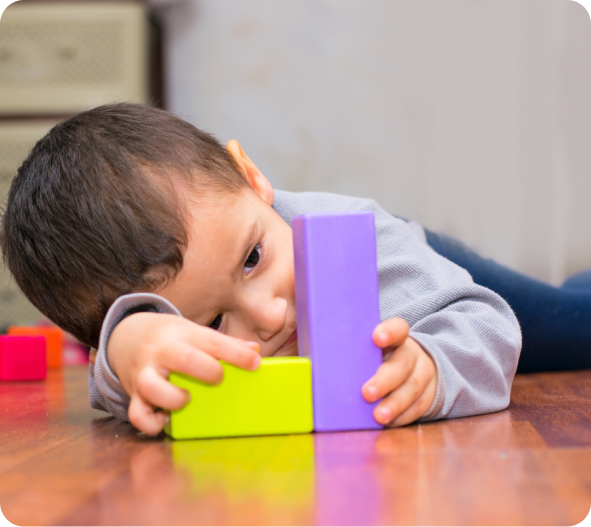AUTISM SPECTRUM DISORDER DIAGNOSIS
There is no clear medical test to diagnose the disorder, and neither a blood test nor a brain scan can be a conclusive guide to diagnosing autism spectrum disorder. Although researchers are actively trying intensively to develop such tests and diagnostic scales. Currently, clinicians/clinical specialists in diagnosing autism spectrum disorder rely on observing a child's behavior to determine the presence of the main symptoms of autism: communication difficulties, lack of social interaction and repetitive and restrictive behaviors.
The diagnosis of autism spectrum disorder can be done in two steps, as follows:
DEVELOPMENTAL EXAMINATION:
It is a brief examination that indicates whether the child learns basic skills easily or has difficulty in that.
The doctor asks several questions to the child's parents and the child himself during the examination to monitor how he responds in terms of movement, speech and reaction, where the delay in one of these skills is taken into account. .
FULL DIAGNOSTIC EVALUATION:
It is a comprehensive review, which includes looking at the child's behavior and development and interviewing his family, and also includes a hearing and vision examination, genetic examination, neurological examination, and other medical
tests.
In some cases, the doctor may choose to refer the child and their family to a specialist for further diagnosis and assessment. Specialists who are able to do this type of assessment are:
- Pediatrician
- Neurologist (children's specialty)
- Psychiatrist
- Psychologist
- Autism Diagnostic Observation Table (ADOS): whereby clinicians/clinicians observe children's behavior and how they integrate and interact in different social situations for up to an hour.

DISORDERS ASSOCIATED WITH AUTISM SPECTRUM DISORDER
More than half of people with autism spectrum disorder have four or more co-existing conditions with autism. The types of conditions associated with autism and how they manifest differ from person to person.
COMMON DISORDERS ASSOCIATED WITH AUTISM SPECTRUM DISORDER
- الحالات الطبية مثل: الصرع، مشاكل الجهاز الهضمي، واضطرابات النوم.
- الاضطرابات النمائية مثل: الإعاقة العقلية، والتأخر في اللغة.
- الاضطرابات النفسية مثل: اضطراب فرط الحركة وتشتت الانتباه (ADHD)، اضطراب الوسواس القهري، والاكتئاب.
- الاضطرابات الوراثية مثل: متلازمة كروموسوم إكس الهش، والتصلب الحدبي المعقد.
علاج الاضطرابات المصاحبة للتوحد مهم، لأنه قد يساعد في تخفيف أعراض اضطراب طيف التوحد وبالتالي تحسين جودة حياة الأفراد ذوي اضطراب طيف التوحد.
مثلًا: علاج مشاكل النوم، يكون له فوائد سلوكية بحيث يمكن أن يؤثر عدد ساعات النوم وجودة النوم على الحالة المزاجية للفرد ذو اضطراب طيف التوحد وعلى شدة السلوكيات التكرارية لديه.


